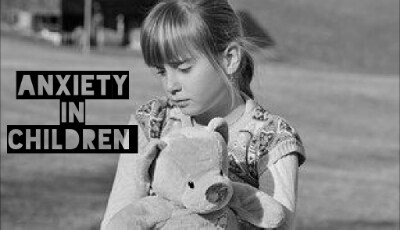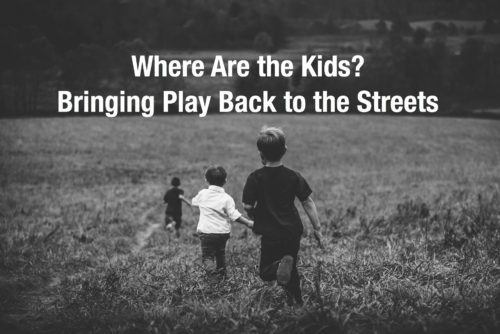There’s nothing worse than when our children are hurt or suffering. It’s inevitable they will experience pain, grief and disappointment. It goes to a whole new level of “hard” when our kids suffer from heightened anxiety. It’s distressing and, at times, heartbreaking for both parents and children.
It is essential that our parenting tool box so to speak is well stocked in order that we can provide optimal support and guidance to our children.
They need us to have the necessary skills to support them during their big, adrenalin fuelled, emotional episodes.
They also need us to have the skills necessary to help equip them so they can ultimately navigate through the maze of their own big feelings and manage their anxieties with confidence.
I want to clarify that I’m speaking about anxiety ie. tension, fear, panic, worry, overwhelming thoughts, physiological changes etc as opposed to the every day tantrum that we are all well accustomed to.
You know if your child has a propensity for anxiety or experiences intense adrenalin fuelled episodes as a result of anxiety if….
* a seemingly tiny, insignificant thing triggers an intense meltdown.
* a change in plans or altered routine causes a meltdown (yet at other times your child is completely fine with this).
* people have suggested that your child may have autism or SPD (sensory processing disorder).
* distress tantrums or meltdowns last for what honestly seems like forever, maybe between 1-2 hours.
* you worry about your child over heating, vomiting or inducing a seizure as a result of their intense meltdowns.
* you are painfully aware of that balance, the seriously fine line, between giving too much warning before an event and not enough.
* your child is thoughtful, unexpectedly empathetic for their age, contemplative and sensitive.
* your child is particularly tuned into non verbal interactions during social situations, picks up on the mood of others despite how they present and is greatly impacted by the tone of voice people use.
* they pay great attention to detail and notice things others may not. They also have an incredible memory and recall abilities.
Understanding anxious children more
When it’s what seems like a minuscule, completely irrelevant event that triggers an episode…. Consider this, your child is most likely cruising along, perhaps appearing externally as if everything is ok, they may even be coping with a few unexpected hiccups. The anxious child however, is often accustomed to their stress levels, vigilance and state of alertness feeling high. They may be used to operating at a level of intensity that is around 7 or 8 out of 10. A few undesirable events take place, they externally appear to cope but internally that level of intensity/anxiety is rising, it’s a 9.5 now. The next thing you know a tiny, almost unnoticeable event triggers a super intense, distressed meltdown.
Here’s a story about a green traffic light arrow causing an epic meltdown for our five year old daughter.
Our family was in the car, we stopped at a red turning arrow. Our two year old is interested in ‘red meaning stop and green meaning go’ at the moment. Hence a conversation about the red arrow began. My husband asked them if they could tell us when it was time to go. For whatever reason, our five year old didn’t see the traffic light change colour. Cue epic, super distressed, high pitched squealing, struggling to breathe, leg kicking meltdown. This lasted for the remainder of the drive to the supermarket and then in the parking lot, probably for about an hour. Nothing we could say or do could fix the situation. In hind sight I can probably think of a few precursor events that might have increased her level of anxiety. Then, a seemingly insignificant event triggered a massive anxiety attack about not seeing the green light. Other times with our daughter there is more build up and the attacks are very much about something that has been occupying her mind.
As I mentioned above, these children are often highly emotionally intelligent. They are particularly tuned in to situations, other people’s feelings and demonstrate empathy from a young age. Our daughter cried at the age of two while watching Play School when it occurred to her that dinosaurs are now extinct. At the age of five she observes when people are using a nice tone of voice but are just pretending because they aren’t really kind at all.
How we can help
1) Stay calm
This serves two purposes. One is that amidst a meltdown your calmness provides a safe and secure point of reference. You are helping your child to eventually calm down. In the very least you are not adding further fuel to the fire, which can only help.
The other thing you’re doing is sending a quiet but clear message to your child. You are communicating to them that you have faith in them, that you trust them to be able to deal with these big emotions. If you freak out too, it will only reinforce to your child that there is indeed something to be terrified about.
2) Verbal cues
Develop some verbal cues that you use consistently. Things that will in time provide a reminder to your child that they will be ok, that they will get through this.
I say to our daughter…
“I am here with you” (this let’s her know she is not, nor will she be left alone)
“You are safe” (even as adults we know feelings of overwhelm and anxiety can be terrifying)
“I love you, you will be ok”
Telling her that she WILL be ok is very different to saying “you’re ok”. The former is letting her know that I believe in her and that we’ve been here before and that she comes out the other side. The latter is denying the very big and legitimate feelings she’s experiencing, it’s saying that she’s ok when she’s feeling anything but ok.
3) Breathe
Breathe together. Tell your child that you’re both going to take some big, deep breaths. While you’re doing this tell them that together you are helping their brain to calm down. Their brain has experienced a surge of adrenalin and thinks there is an emergency. Your child will learn in time that they can tell their brain that it’s ok, that there isn’t an emergency and that it doesn’t need to be in that flight/fight mode.
A physical prompt sometimes helps too. They could hold your hands as you both breathe or place their hands on their tummy as they inhale and exhale. My daughter and I practise “deep belly breathing” when all is calm in order for her to call upon this skill more readily during an anxiety attack.
4) Chat about it after the storm
Once your child is feeling calm again talk about it. Ask them what it feels like, what are they most worried about etc. Remember not to unintentionally belittle their feelings or downplay what they are afraid of. Although it might make sense or seem reassuring to us if we say things like “You don’t need to worry about….” or “It’ll be fine”. That kind of sentiment, no matter how well intentioned, can inadvertently imply that there is something wrong with them. They do not know how to be ok about it, they do not know how to stay calm in that situation.
It is also really helpful for them to know that other people feel the exact same feelings sometimes. 1 in 8 kids experience anxiety. http://www.heysigmund.com/anxiety-in-kids/
“Give them plenty of space to talk about what’s happening, but don’t try to change it or fix it. The more you can validate what they’re feeling, and give them permission to feel it, the more they can move through it and experiment with ways to deal with it.” http://www.heysigmund.com/building-emotional-intelligence-what-to-say-to-children-with-anxiety/
5) Explain the brain
Explain that our brains are always learning new things and changing. We can literally teach our brain a new way to approach or handle a situation that currently causes anxiety attacks. Each time amidst an attack that they breathe and ultimately calm down, they are rewiring parts of their brain. This kind of knowledge, to know they can teach their brain to stay or regain a sense of calm, is empowering. The link included above goes into greater detail about what’s occurring in the brain and how we can change it. Click here for full article http://www.heysigmund.com/building-emotional-intelligence-what-to-say-to-children-with-anxiety/
This article (mentioned above) also discusses what anxiety feels like, strategies and the brain http://www.heysigmund.com/anxiety-in-kids/
Knowledge is power. Dr Hazel Harrison describes the brain as being like a house with an upstairs and downstairs (the idea comes from Dr Dan Siegel and Tina Payne Bryson’s book ‘The Whole Brain Child’).
“I tell them stories about the characters who live upstairs, and the ones who live downstairs. Really, what I’m talking about are the functions of the neocortex (our thinking brain – the upstairs), and the limbic system (our feeling brain – the downstairs). Typically, the upstairs characters are thinkers, problem solvers, planners, emotion regulators, creatives, flexible and empathic types. I give them names like Calming Carl, Problem Solving Pete, Creative Craig and Flexible Felix.
The downstairs folk are the feelers. They are very focused on keeping us safe and making sure our needs are met. Our instinct for survival originates here. These characters look out for danger, sound the alarm and make sure we are ready to fight, run or hide when we are faced with a threat. Downstairs we’ve got characters like Alerting Allie, Frightened Fred, and Big Boss Bootsy.”
Click here to read article and for ideas about how to teach and use this analogy with your child.
http://www.heysigmund.com/how-to-teach-kids-about-the-brain-laying-strong-foundations-for-emotional-intelligence-by-dr-hazel-harrison/
6) Dont force
I’ve heard many well meaning parents, attempting to do the absolute best by their children, ask if it would be helpful to coerce or encourage - to basically force their child into doing something that triggers anxiety in the hope that they have some kind of revelation that it is fact “not so scary after all”. Definitely not. This can do further damage. It can break trust between parent and child. It can take away power and autonomy from the child, resulting in them feeling even more anxious and less certain of their own abilities to make choices and cope.
7) Breathing and mindfulness
Mindfulness is a mental state achieved by focusing one’s awareness on the present moment, while calmly acknowledging and accepting one’s feelings, thoughts, and bodily sensations.
Incorporate these practices into your every day life. Perhaps each morning or before bed each night. If your child is familiar with practising slow, deep breathing and mindfulness they will more readily be able to call upon these skills when they are panic stricken.
8) Celebrate
Remember to acknowledge and celebrate the strengths, qualities and gifts that come with a tendency towards anxiety. Affirm your child’s strong points and wonderful, unique character traits.
Take heart, there are many things we as parents can do to both help our children in the moment, as well as to help them to become confident at expressing and managing their emotions in a healthy, non paralysing, appropriate way.
We can be a calm haven and a secure rock for our children. We can send them the message that we believe in them and have faith in their ability to manage their anxiety with success and confidence.




No Comments